France
Paris
Switch to your local agency
Retour au menu
We are living at a time where technology is advancing much more quickly than brands and designers can keep up with. For the first time ever, brands are being forced to react to technological developments, rather than lead or develop in tandem with them. This is because the latest technology is challenging the very notion that brands are primarily visual entities. Instead, we’re being steered towards an exciting yet unchartered territory: invisible brands.
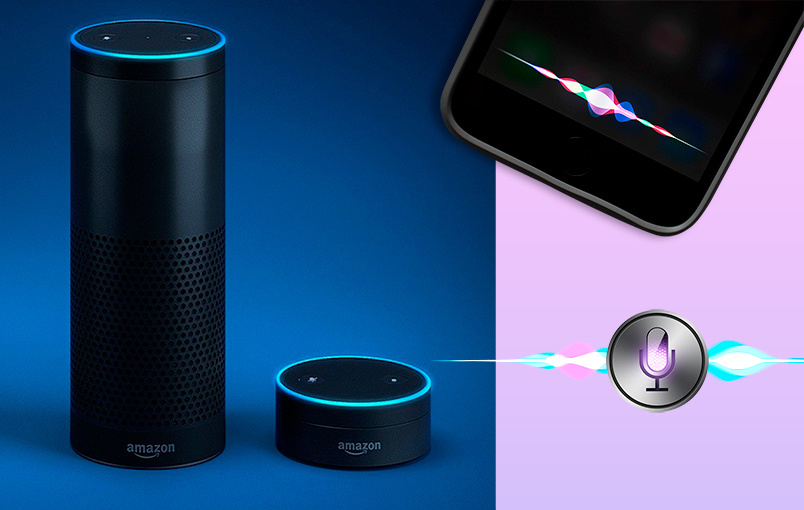
If you start at design school today you learn a visual way of communicating: logos, identities, photography, color schemes, typography. In the past, we would use these visual means to push brands forward: new visual concepts, changing logos and showing the future in a visual way, like the daring 2012 London Olympics logo did. But technology is now taking us beyond visual brands. For example, brand loyalty is now influenced far more by the experience a brand provides, rather than how it looks. Take Uber for example. Meanwhile, the success of Amazon’s Alexa and Apple’s Siri have opened up the world of a purely audio branded experience – which presents some exciting opportunities, as well as daunting challenges, for brands.
If you ask Alexa to buy you some water, Alexa will probably get you the brand that Amazon has the best deal with, unless you specify exactly what brand you want. Similarly, with the development of fully automated homes becoming a reality, consumers will have to be pretty brand loyal to ensure that your digital assistant orders a particular brand of product or chooses a particular service provider. In this kind of audio consumer world, how a brand sounds and how it exists and communicates in an audio environment is far more important than how it looks, and it’s through audio that brands can continue to connect to consumers as technology shifts. A complex sonic identity will get more and more important as we can talk to brands, have branded music banks, and as the navigation system screens in our cars get smaller and smaller, why not have jingles for a coffeeshop or gas station along your route?
Stubb’s BBQ sauce is a fun example of a brand dipping their toe in the world of invisible branding. They’ve developed the Alexa skill ‘Ask Stubb’. Once downloaded, consumers can ask Alexa for recipes from the founder, listen to his favorite tunes, get cooking tips and tricks, and importantly order more sauce at any time. It doesn’t take a branding genius to realize the advantage that this gives Stubb’s over competitors who don’t have an audio presence.
Don’t get me wrong, I think brands will always need a visual element. After all, how a product looks once it’s arrived in our homes is still crucial. But as consumer habits shift away from the screen, audio is becoming more and more important when it comes to informing consumers’ buying decisions.
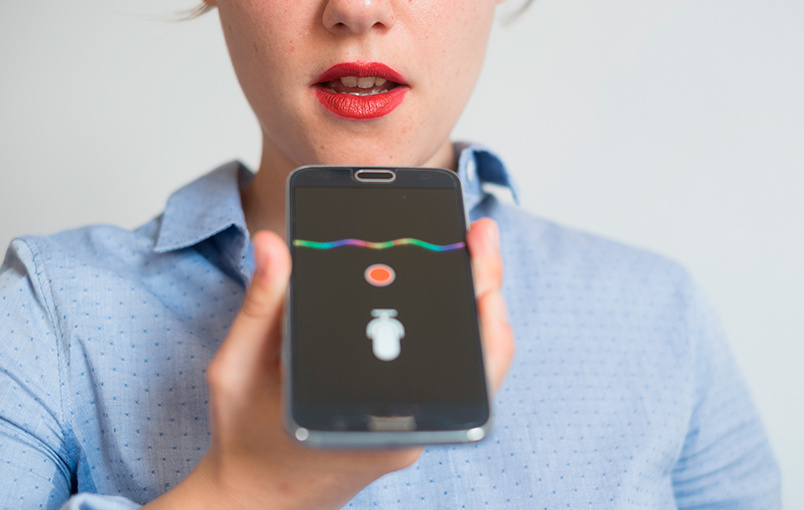
While a world of invisible brands opens up new opportunities to engage with consumers, there are also some potential threats to brands. Whatever digital assistant consumers use to order their shopping or control their home can potentially make big decisions on their behalf, such as choose which energy company they use.
If Nest, or any other smart application that regulates your thermostat could talk and propose better deals, which energy company would it suggest? Will it know that an environmental conscious offer is more important to me than saving money? This ‘cutting out’ of direct communication with the brands in question could happen across all product categories, resulting in a monopoly where a small few brands will take more and more of the consumers’ bandwidth.
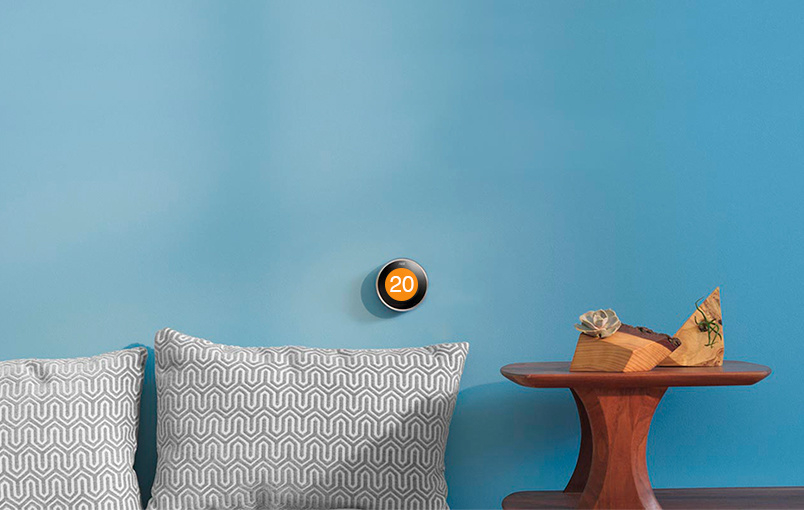
Some experts have even proposed that audio assistants like Alexa will mark the end of brands. But I believe it could trigger the opposite and open up a whole new way for brands to communicate with consumers. Brand loyalty will be the key factor and brands will have to start thinking right now how to create experiences and exist in the world of invisible brands.
It’s down to agencies to discover the best ways for individual brands to exist in this new environment. Crucially, we need to start thinking about brands in many more dimensions than we do currently, and do this with an understanding of how technology can connect with consumers beyond visual means. The future lies in working out how to harness, tailor and customize this technology for the benefit of brands. To lead the way where technology is heading, instead of chasing after it. The evolution of branding will mean to consider all touch-points, all technologies. At the moment, I don’t think enough of the industry is fully aware of the opportunities that invisible branding can offer. The agencies that can offer a full package completely aligned with the latest advancements in technology, will be the ones that survive.
Authored by Creative Director at CBA Paris, Martin Iselt.
Like many experts in the branding world, we look forward to ExpoWest every spring. It’s a collection of the best and brightest in natural foods, as well as a testing ground for its newest developments. It’s massive and immersive, absolutely deserving of the full four days to see everything.
As my colleague Esme recently wrote, “natural is no longer exclusive for die-hard devotees of natural products.” While I was browsing the aisles, I was reminded of how massive and mainstream it has become. With $141 billion in natural product sales generated in 2016, seems like many consumers agree with me. So how can we as consumers, short of becoming health and wellness experts ourselves, find the right product?
It’s no secret that branding plays a subconscious role in the purchase decision-making process. One of the most influential ways consumers emotionally perceive brands is through their archetype. Familiar to many in branding, these are collections of images and motifs that have been repeated throughout human history in our stories, our art, our media. They can be named and have a core meaning, but their “dress,” as it were, changes based on era and culture.
The proliferation of the natural category is the perfect opportunity to examine some of the 12 archetypes and how certain brands are bringing them to life. The Magician, the Sage, and the Innocent archetypes are the most prevalent in the natural category, and Expo West showed how they’re changing.
The Magician archetype is typically curious with the inner workings of the universe, occupied with uncovering its secrets. In the natural category, the Magician was traditionally shown as a sort of mystic, with ingredients taking on an almost unexplained supernatural quality. This falls perfectly in line with the super-fruit ingredient that changes every year. In recent years, however, Expo West has shown how this Magician has become more scientific, heading to the lab to prove the powerful properties of natural ingredients like collagen and adaptogens.
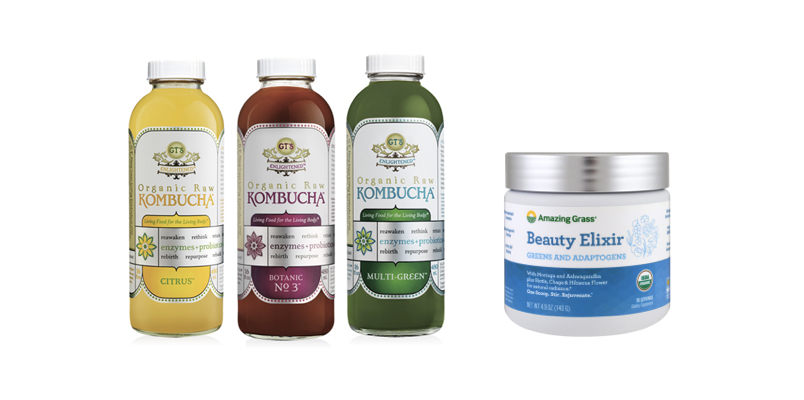
The Sage archetype is the most trusted, revered for its wisdom and enlightenment. This archetype found a home long ago in the natural category, relying on expert opinions in the form of experienced founders to explain and sell a product or new ingredient. But as consumers are, on the whole, becoming more familiar with nutrition and sourcing, the Sage is taking a step back from a founder mouthpiece. Instead, the Sage is letting the product speak for itself, giving space and attention to the star ingredients.
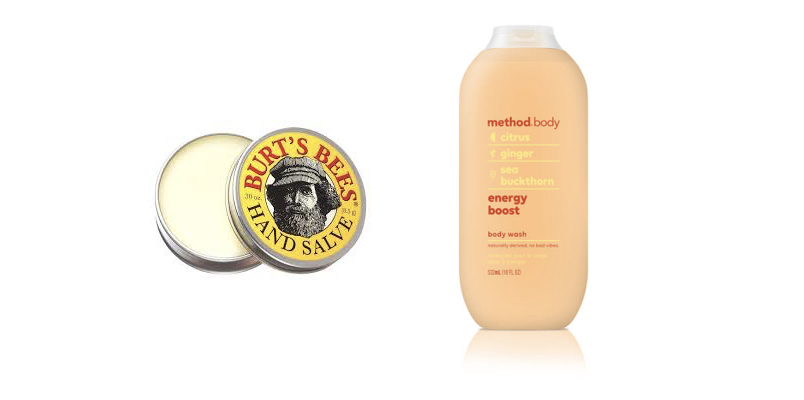
The Innocent archetype is pure and optimistic with no ulterior motives. Endearing and honest, this archetype was commonly used to make natural products as inoffensive and palatable as possible. As natural products flood the shelves, the Innocent now has the social acceptance to play and as such, moved into whimsical territory. The Innocent still needs to get consumers to understand its proposition quickly, especially when a natural food comes from an alternative ingredient source, like seaweed or crickets!
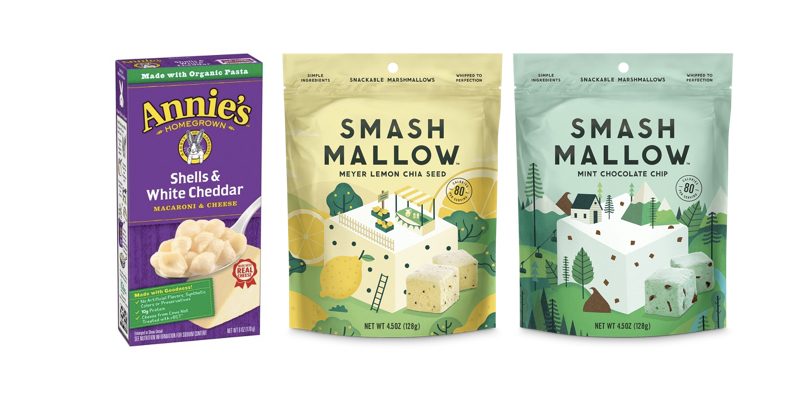
The natural category is gaining more traction, but is still facing a climb towards total market saturation. What has tied these three main archetypes together is their goal in persuading as many people as possible to try their products, in building trust. As Jason Wachob of mindbodygreen said during a panel over the weekend “Trust takes years to build, a second to break, and a lifetime to rebuild. That’s where the category still is.”
It begs the question, what will the natural landscape look like when everyone trusts it?
We predict the next archetypes to have a majority presence will be the Ruler and the Hero. These archetypes, due to their innate personality to be the main character, will naturally do well in a more robust category where they can stand out. As the rate of adoption increases for natural products, a power vacuum will inevitably call for Ruler brands to rise to the top, while Hero brands will enjoy having consumers cheering them on.
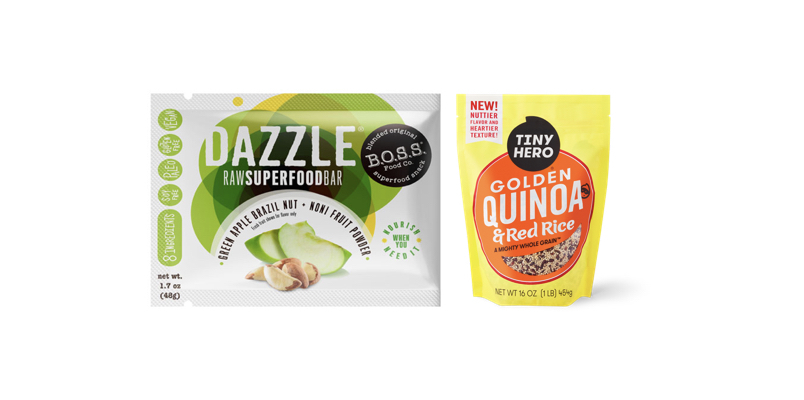
Expo West is always an inspiring show and the branding present demonstrated just how fleshed out the natural market has become. As we’ve seen, it’s a diverse category, ripe to expand and define itself further. It’ll be interesting to see how the category evolves over the course of the year and if our predictions are accurate. The examples above are merely five of the twelve archetypes that we’ve spotted, all of which we’re tracking closely. If you’re interested in learning more, please email us at [email protected].
Authored by CBA Brand Strategist, Chelsea Brown.
Today, so much has changed. Buying natural products does not require such tradeoffs. The sacrifice in regards to taste, quality or performance is no longer a barrier. Natural products often have the same benefits as mass products but with the additional value of being more purpose driven and, in many cases, better for you. Consumers can buy natural products that are great for them, their families, their communities and the world in general. The access to these natural products is now more democratic and that will only increase.
No doubt about it, the natural category is growing. Passionate entrepreneurs have uplifted the standards of natural products, bringing about greater quality, accessibility with fewer sacrifices for consumers. But the main growth comes from a profound shift in consumer behavior. Today we think differently about health, ethics and responsibility, and this is a key driver for growth in the category. As a consequence, natural is no longer exclusive for die-hard devotees of natural products.
Entrepreneurs, venture capitalists and big companies are all looking for opportunities to tap into this market. Ben & Jerry’s acquisition by Unilever was a huge milestone and indicator in the market back in 2000. The two dreamer activists expanded their reach and Unilever got an amazing brand to help support its brand vision “to making sustainable living commonplace”. Having great ideas and developing them require an entrepreneurial mindset, tons of energy and a particular culture that might be not as easy as implement in big corporations. For this reason, 17 years later after Ben & Jerry’s acquisition, many big companies are trying to extend their portfolio following this example while keeping the vision of the entrepreneurs and the DNA of the brand and helping them scale to become the new mass brands of tomorrow.
Technology is an additional driver for natural brands. It evolves each day and opens up new ways to deliver innovative solutions and directly connect with consumers. Making a brand live and engage with consumers is key for awareness, recognition and conversion. Many natural brands know this and they are not afraid of experimenting and refining their messaging as they learn. The power of this shift is well illustrated by the mammoth merger of Whole Foods and Amazon and their drive to help consumers order organic goods using Alexa.
Just this year, Danone bought WhiteWave with over a dozen natural brands. The resulting company DanoneWave is now investing through Danone Manifesto Ventures in companies like Michel et Augustin. General Mills’s 301 Inc. incubator is helping brands like Rhythm Superfoods, Beyond Meat or KiteHill to scale in a similar way, and Unilever hasn’t stopped investing in natural brands, as seen by their recent acquisition of Pukka Herbs.
As we head into 2018 the evidence suggests that natural offerings will have a louder voice and wider distribution than ever before, eliminating outdated barriers of performance, price and perception. As such, larger companies should be reviewing the value proposition of their mass market brands and identifying ways to support the natural movement, or develop new propositions to enter this category, otherwise fear demise. The signs are clear: the opportunity (in natural) is massive.
Authored by CBA East Coast Business Director, Esme Gonzalez
Image via HuffingtonPost
1.) Your competition is online
While holding out on a digital strategy and selectively choosing your social channels may have worked for a while, consumers now expect their favorite brands to have a presence online. It’s also worth considering that much of your competition may be (or is soon-to-be) online in the form of direct to consumer goods. As a result, make sure to include digital in your design strategy, not just as a simple sales channel, but to develop unique online brand experiences and build more personalized relationships.
Purina Beyond E-commerce
While Purina Beyond had historically been a brand bought in person, in a physical store, when the company saw an uptick in e-commerce orders, they decided to adjust their design strategy to match. While most e-commerce packages come in a plain brown box, Purina created a unique product, package and unboxing experience specifically for their e-commerce shoppers, including some specifically formulated small batch products that are unique to this channel. The resulting design ensures that consumers receive an unexpected and delightful Purina experience on their doorstep every time they buy their favorite pet-food online.
Away
On the flip-side, Away is a direct to consumer luggage company that makes one thing: luggage. While they do this well, being online only could also mean missing interaction time with consumers. To help solve this, Away connects with consumers in unique ways – they launched an add-on that offers buyers personalized monograms on their luggage, hand-painted by NY artists (personal touch, anyone?). Special pop-ups such as their recent partnership to launch a pop-up hotel at the Amastan in Paris for fashion week allows shoppers to experience the brand in its intended environment.
2.) Salesmanship isn’t always about selling
Because consumers are increasingly looking for brands that feel human, that means that brands need to tone down their transactional nature significantly in order to gain trust. In fact, sometimes one of the strongest ways to raise awareness for your brand and create value for your consumer is not to sell a thing.
Lean Cuisine
An oldie but a goodie. Back in 2015, as trends were leading away from weight loss and focusing more on strength, nutrition and health, Lean Cuisine pivoted from a diet company to a modern health food brand. To help elevate this messaging, they launched a social campaign called #weighthis, showing women near a scale. Instead of asking them to weigh their bodies, women were asked how else they’d like to be weighed – in their personal accomplishments, acts of kindness etc. No food was served alongside this campaign, and yet it helped catapult Lean Cuisine back into the CPG running, this time as a health food brand.
Volvo
To mark its new 90 series range of cars, Volvo create a series of videos called “Human Made Stories.” They featured tenacious people, determined to solve challenges to problems in new ways. The films are beautiful, personal and have nothing to do with cars. A Volvo may appear in a frame or two of each, but the content is immersive and inspirational. The goal was to align their brand with the values of their target consumer to strengthen or create a compelling emotional bond.
3.) The lines are blurring
Possibly one of the hardest parts of experiential branding these days is that brands are blurring the lines between their product, their personality and their consumer. Brands are living, breathing entities and the best ones behave like individuals too; passionate, relatable, and often unpredictable. The strongest brand experiences this year all took some pretty significant liberties, stretching the boundaries of their offering to make experiences feel unique, desirable and differentiated. Word to the wise however, if you stretch anything too far, it will break, so make sure that you always keep your core consumer in mind.
Nordstrom
Nordstrom has just announced that they will be rolling out a series of experiential stores that won’t actually stock merchandise. Instead, consumers will be encouraged to interface with personal shoppers who can help them curate clothes from other stores or online and try out services and experiences that traditionally live at the periphery of
consumers shopping habits, like manicures, tailoring and even food and beverage.
Ford
While Ford is technically a car company, it’s no longer acting like one. Instead, Ford’s new CEO says that the future of Ford is mobility, which is more about moving people around then about vehicles. Next on Ford’s list of mobility challenges to tackle? Parking, public transport and bikes. This shift in business focus suggests that Ford, any companies like it may strongly influence not just what we buy in the future, but how we live.
Ultimately, we’re just beginning to tap into the potential for brands to design for consumer connection. And while many retailers and brands are struggling to keep up, others are using the shift as a catalyst to prioritize the needs of their shoppers. For example, when WholeFoods and Amazon joined arms, it changed the game for both companies and set a whole industry on edge. And while we don’t know exactly what that future looks like for either business, what we do know is that merger was a result of both companies being willing to take a business model risk in order to prioritize the needs of their consumers, and that’s worth paying attention to.
If there’s anything we tell our clients as they’re defining their own digital and experiential strategies, it’s that taking risks in the interest of your consumers is vital to staying ahead of the curve. And as long as you keep the 3 principles above in mind, those risks very often pay off in the form of brand loyalty.
Authored by CBA North America Managing Partner – Elainne Roberton
Image via Away.com
Being attractive to millennials is one of the main subjects that keeps our clients awake at night. And as youth spending power increases, marketers sharpen their thinking and find clever ways to attract them. Strategies vary from content production, product development, media presence, PR or the launch of a new brand.
In terms of graphic codes, Millennial Pink is in vogue. The motto “Millennial pink sells” has replaced the “sex sells” in a trendier way. This washed tone of pink has gained momentum and gone mainstream. You can find that shade of pink in almost every category of product: chocolate, sneakers, cosmetics, water, underwear, electronics…you name it.
Color, since the beginning of commercial branding in the late 1800s has always been a key design element. Color has helped identify brands with a story, a feeling, a sensation or with other products in the same category. Creatives have mixed and balanced color together with lettering, naming, iconography and the spirit of time to create irreplaceable icons of consumption.
Every brand wants to be recognized with a color and repetition is what glues a brand with a particular color. Red is synonymous with Coca-cola or Louboutin, robin’s egg blue screams Tiffany & Co., and a certain shade of bright green represents Heineken. Even legacy brands embrace this strategy today. From an indifferent chocolate color to a sharp combination of imperial saffron and a bright royal blue, 163 year old brand, Louis Vuitton’s new packaging declares its uniqueness in a contemporary interpretation of luxury.
Owning a color or set of colors helps a brand gain recognition and build an impression in consumer’s minds. Color can shape spending behavior, making a consumer feel proud of their purchase or visually cueing consumers to pick-up your product instead of the competitors in a supermarket aisle. In this way, color is not about taste or preference but about brand management.
Color goes hand in hand with symbols and tone of voice to communicate your brand purpose and bring your brand story to life. They are all part of a complex system of signs that translate the key message from the heart of the brand to the consumer. And if you want to infuse your brand with meaning and help your consumer navigate the world of options using color, it’s important to define and keep your color pallet consistent.
Choosing the right colors is a key decision that might seem abstract. You could be tempted to use the color in vogue to fit in and be relevant with a target audience, but sustainable brand building requires deeper thinking. It requires figuring out who you are as a brand.
Fashions come and go. Millennial pink might be a great solution for a tactical launch, but just remember that color itself washes away with time. Your brand deserves a long-lasting and colorful life, and a consistent and strategic use of color, along with your existing brand assets, is the best way to ensure emotional resonance and connection with your consumers.
Authored by CBA East Coast Business Director, Esme Gonzalez
Image via littlegoldpixel.com
In 2004, H&M released its first collaboration with a high-end designer: Karl Lagerfeld. In a TV ad for the collection, aristocrats appear shocked and disoriented upon learning the news, feeling « betrayed » and calling the project « cheap ». Karl appears at the end of the spot to settle things: « cheap » is a matter of attitude, not a matter of material wealth. One can argue such work was motivated by a desire to make luxury and high-end style accessible to all, democratizing designer clothing because wealth does not make one stylish, style does. Since then, H&M has developed 14 collaborations with luxury designers such as Lanvin, Versace, and the latest to date, Balmain. Although it allows both brands to get great publicity, the biggest benefit arguably went to the Swedish retailer in terms of fashion credibility and noble-inspired legitimacy. Luxury branding used to be hesitative prior to engaging with popular culture or popular brands. The relationship would be as perceived as the luxury brand almost doing a favor to popular culture by elevating it to its level. However today, this dynamic has shifted, not in the sense that designers benefit from H&M’s image, but because the luxury sector is being drawn toward a rather popular set of codes: the streetwear scene.
It first seems unlikely that the ancient mores and conventions of luxury designers would aspire to the ways of the cheap and simple youth. As a matter of fact, brands have generally been repositioning themselves to adapt to the Millennial generation, a population segment that tends to perceive luxury as “a lack of common sense”, standing for “overpriced, poorly considered products” (Jasper Morrison, stylus article http://www.stylus.com/fktcbn). As a response to the youth going back to basics, luxury brands have been aspiring to turn everyday commons into something unique and precious. Appropriating streetwear codes has become a way to restore luxury’s major feature of being a source of avant-garde creation, with the street being the main cradle for inspiration.
Among this aspirational pauperization, the skater culture is a trend that has become highly relevant in the luxury fashion world, through collaborations such as Louis Vuitton x Supreme, but also as a whole new aspect of brands such as Chanel, whose latest Gabrielle ad campaign portrays Cara Delevingne with a beanie and a skateboard, a rather casual stance on high-end fashion. Maison Valentino has also been showcasing its products through the skater culture lens on its Instagram. While skate might be streetwear’s original “turf”, luxury fashion adds street credibility to its heritage by appropriating this environment.


There’s more than the products at stake: the luxury sector has adopted a laid-back, unexpected communication tone. Brands such as Gucci have been playing with this attitude by communicating about their latest accessory collection through memes on Instagram. Memes generally involve a picture, taken out of context, with a derisory caption. Here, the “Gucci starter pack” puts together elements from both Classical art and 90’s “cheap” fashion. The public space has transitioned from a place where people admired prestigious luxury brands, to a major source of inspiration for the latter.


Self-derision is a way of countering the luxury sector’s tacky reputation, by acknowledging the fact that brands are not socially or morally above their public, but have flawed personalities just like everyone else. Such a positioning has allowed more people among the youth segment to identify with their essence, while brands still benefit from referencing their classical heritage. For this game plan to be successful, it needs to be credible in the eye of the public from which it appropriates codes. One should not construct the street as a low-end, lawless space where people live with no marks, because brands can in fact tap into this scene as a source of strong and timeless values they have always claimed as well, such as the importance of work and family. Although these are quite significant in the public’s eye, their meaning is different from their traditional conception that brands have long been offering. Indeed, while they used to embody flawless success, a perfectly pure family and pragmatic hard work, today’s youth has moved away from these outdated ideals and has reconstructed its own meanings, allowing for imperfection, spontaneity and messiness in family and work. Gucci’s avant-garde has thus managed to encapsulate the fun in one’s flaws that Millennials have been fighting for.
Authored by Brand Strategist Chloé Rinaldi
The star of the show this year was glass. Brands played with its durability and used craftsmanship to create intriguing platforms for brand stories. They also used glass as an effective tool to play with the cues of other industries. By connecting themselves to another sector, brands can leverage some consumer drivers that they may not have had previous access to. Alcohol was shown to be an industry repeatedly referenced by maple syrup, coffee and sauce brands. Borrowing from the craft alcohol territory has proven to be a quick way to communicate craft and artisanship.
The flask shape in particular made several appearances. Prohibition era references were refined with smooth textured glass. Runamok’s infused maple syrup and Jittery John’s espresso blend cold brew were best in show when it came to exploiting the flask shape. Each achieved a modern yet illicit sophistication by cueing the craft alcohol movement. Haku’s line of infused and whisky barrel shoyu and Rufus Teague Made a Sauce also demonstrated how the flask shape was well-suited to elevate ordinary condiments to new levels.
Whiskey was frequently referenced by maple syrups brands. Crown’s maple syrup’s structure would almost require a second glance so as not to confuse it with an actual whiskey brand. Similarly, the Mexican brand Donoxti used the glass structure of tequila bottles for their avocado oil. This worked on two levels for this brand, tying the brand to the bold world of tequila, while nodding to the brand’s cultural heritage.
Beer has long been a source of inspiration for coffee and Califia Farms stunned this year with their newer Gold Label Cold Brew and Nitro Cold Brew, stepping away from their traditional plastic bottles with both. The Gold Label borrowed from craft beer with a special batch metallic label while Nitro Cold Brew used a matte aluminum bottle, a structure that is currently popular with mass beer makers. While not glass, the move shows Califia’s commitment to going beyond the typical cues of indie coffee, a strong decision considering how popular nitro cold brew is becoming.
Small, glass bottles communicated a trusted small-batch feel and Dashfire Bitters capitalized on this with their full line of single flavored bitters as well as their specialty bitters. The rectangular structure, rubber droppers and newspaper packed label tells a story of craft and measured value. Their new “Vagabond Series” showcased a new circular structure which is no less successful in communicating authenticity and discovery. Vain and Arbequrina & Co. both brought the apothecary out of alcohol and into coffee flavorings and olive oil infusions, respectively. These brands each give consumers a new level of ownership and customization.
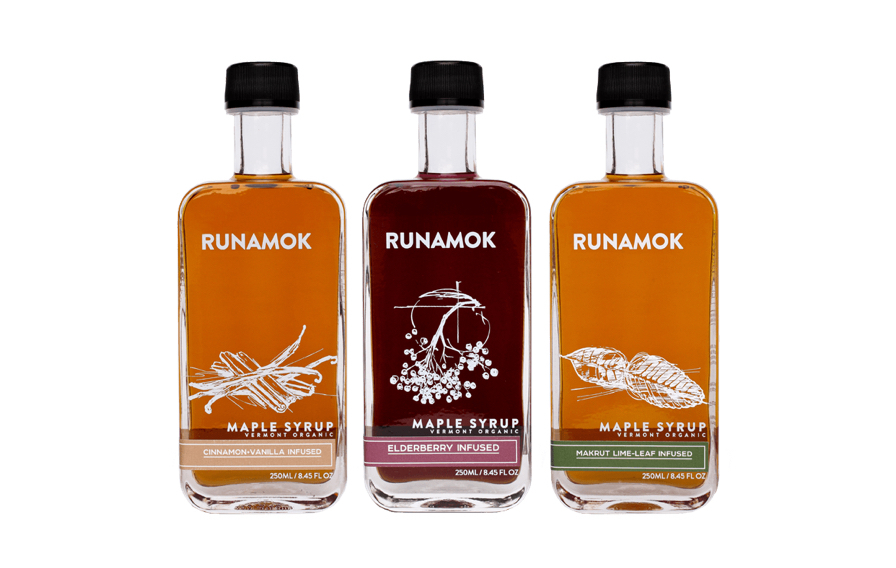
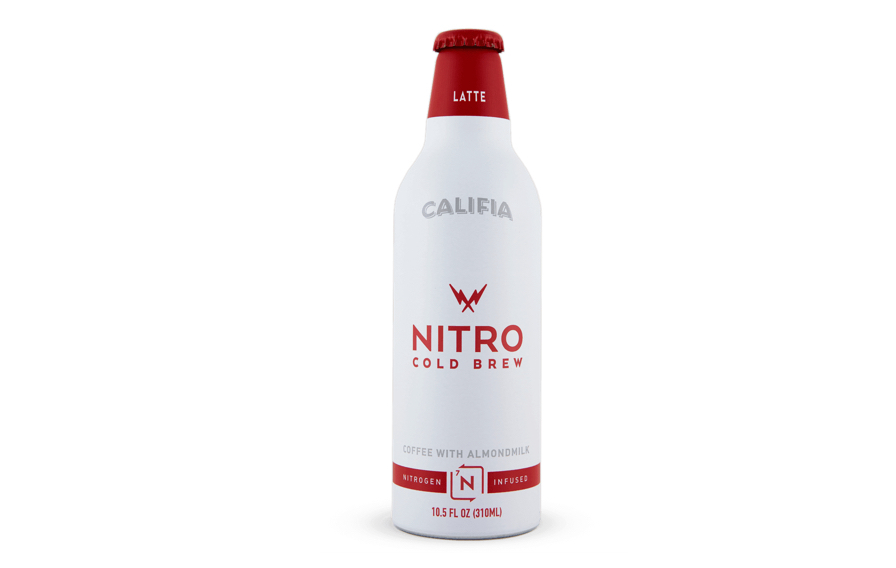
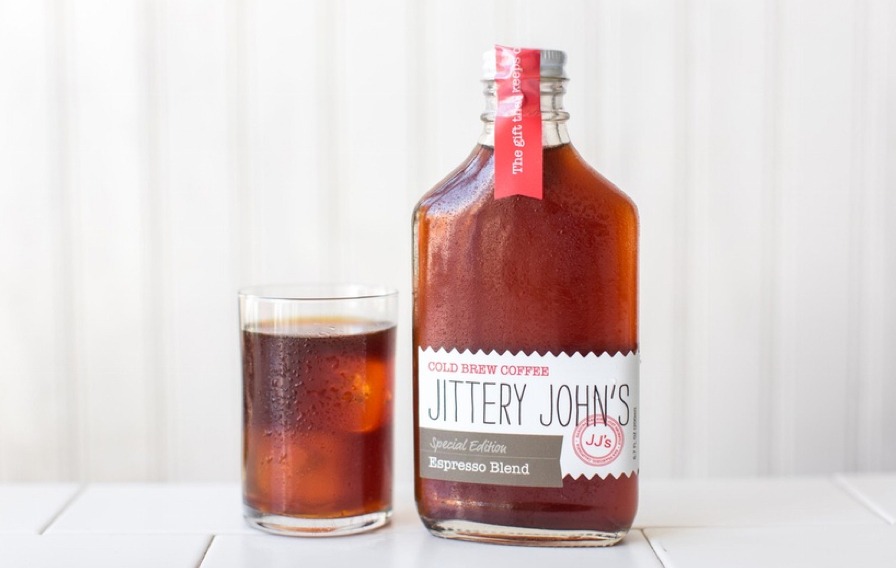
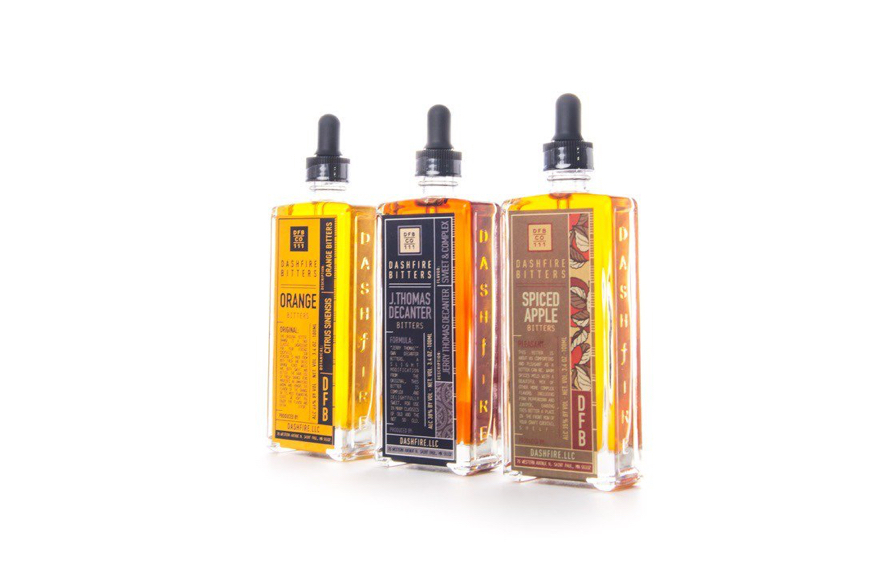
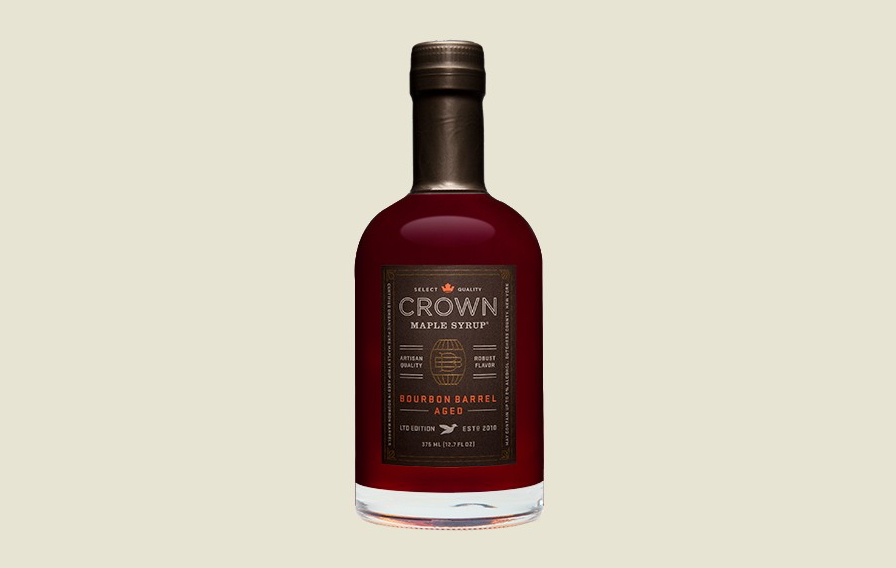
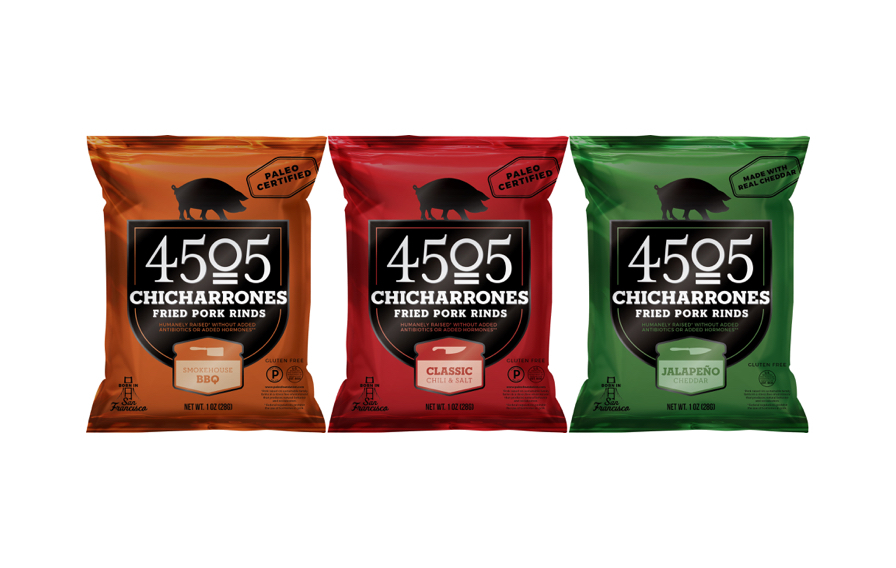
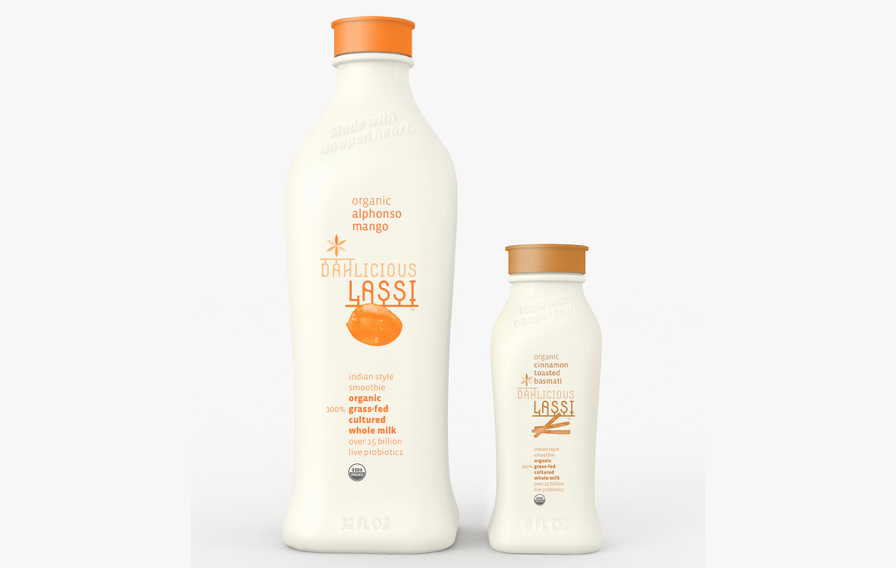
In 2014 a whopping 63% of Americans said they avoid drinking soda, and in 2015 48% of consumers said they were replacing soda with flavored water. Since, the beverage industry has seen a huge increase in flavored waters and new beverage ingredients driven by the desire to reduce sugar consumption. As we saw at the Fancy Food Show, this means brands are seeking ways to attract consumers with new beverages, or twists on old ones.
tVintage brand Original New York Seltzer joined the sparkling water trend with the launch of their new line of flavored sparkling waters cans. Many people may not know the difference between seltzer and sparkling water and ONYS is betting on that. Using their trusted, old-school persona they made a smooth transition to sparkling water.
tOwl’s Brew, known for artisanal tea cocktail mixers, debuted a new product offering. Expanding upon their original brand proposition while simultaneously opening up what tea can be, Owl’s Brew introduced Owl’s Brew Radler, a canned beer and tea double brew. This also marks their first alcoholic beverage. Similarly, JOIA, of sparkling beverage (definitely not soda) fame, introduced their new line of craft cocktails in slim cans, named JOIA Spirit.
tWild Poppy also debuted a new product and coincidentally brought the non-soda trend full circle. Wild Poppy is known for their natural juices in glass bottles, but their new product is an all-natural soda in a can. Is this the harbinger of a willing return to soda?
While soda is not completely out of the beverage race, drinking vinegars were clearly clearing new space on the shelves. Returning to the timeless human search for a cure-all beverage, tonics and drinking vinegars were out in full form including Vitox’s drinking vinegar, Shire City Herbal’s Fire Cider and even Golden Brew Tea‘s new apple cider vinegar tonic.
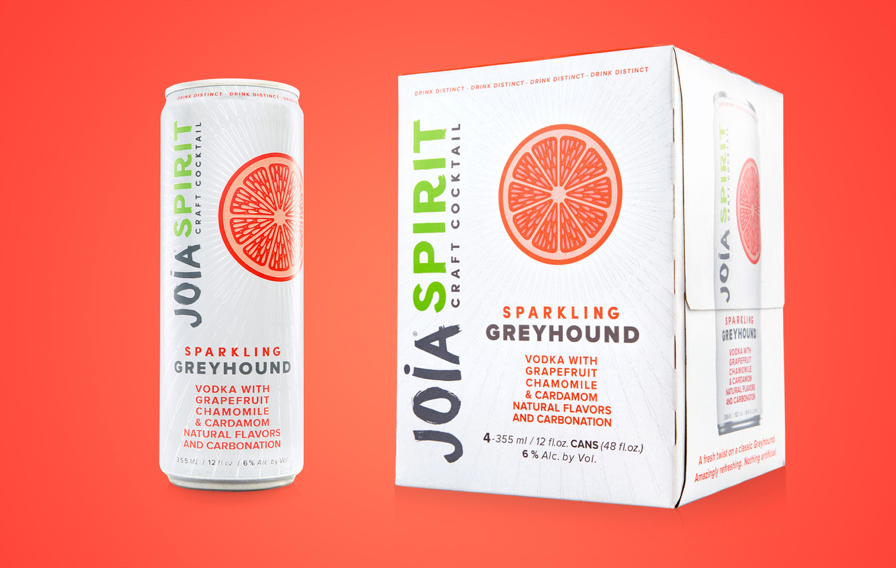
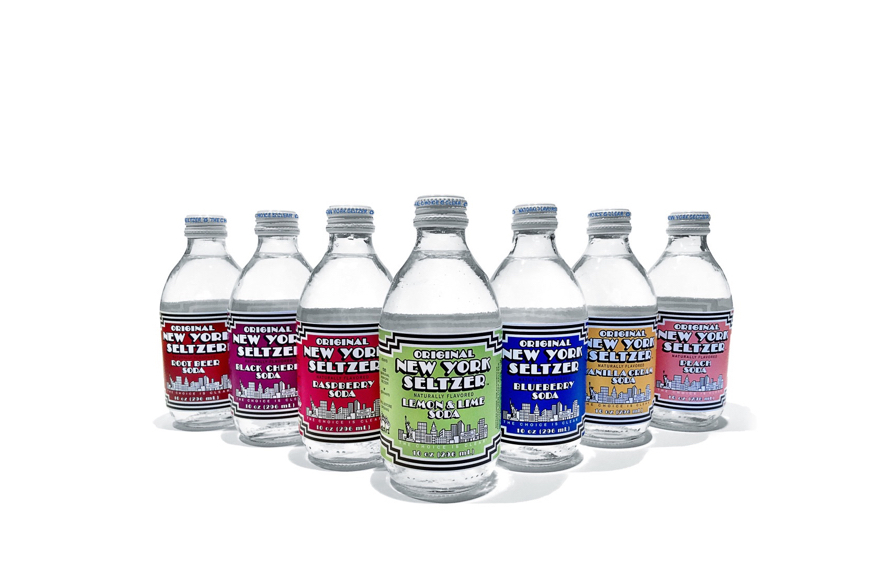
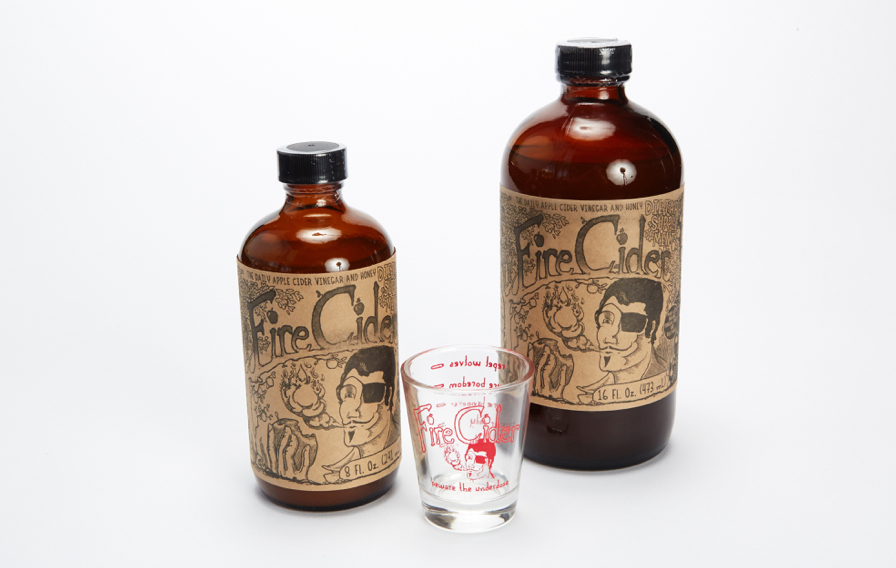
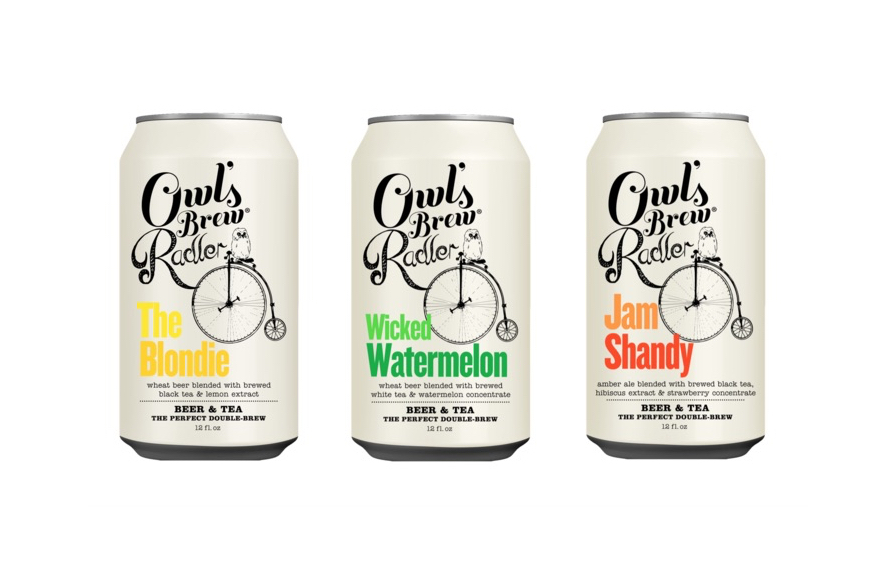
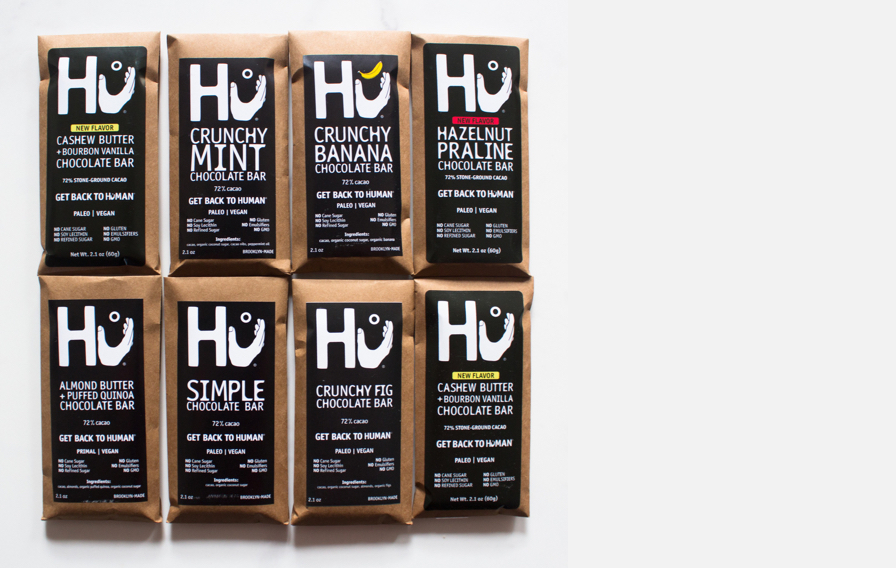
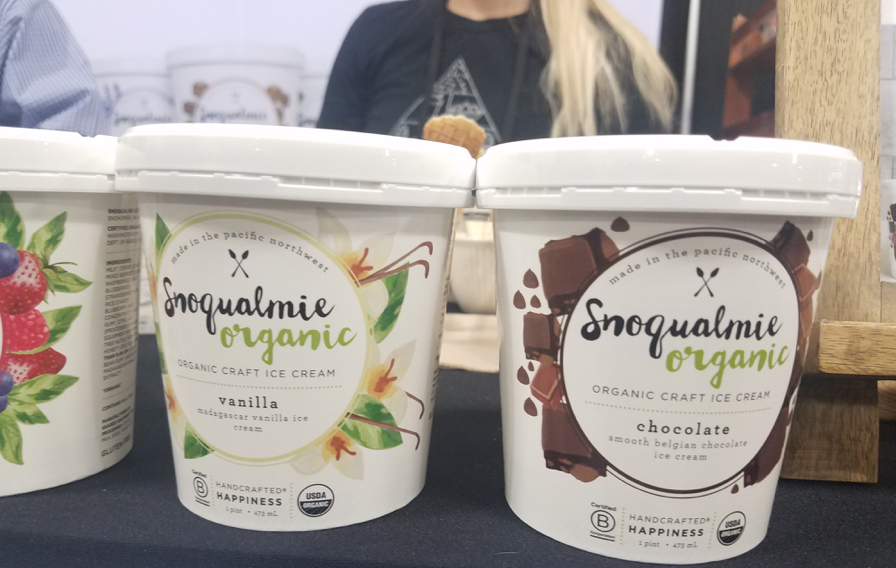
Recent data shows that the natural foods sector is a $40 billion industry, even though the FDA does not have a set definition of what “natural” means. This confusion about natural, as well as all the other many food claims, has seemingly resulted in brands placing any and all claims together wherever they can on their packaging, regardless of how it impacts the design. This was abundantly apparent at this year’s Fancy Food Show.
Some brands, however, found ways to incorporate natural claims into their design in a desirable way. 4505’s new design for their chicarrones incorporated a large thematic “paleo certified” label while minimizing the official certifications to the lower corner. Likewise, Snoqualmie used their new packaging as an opportunity to feature their certifications symmetrically placed on either side of their brand promise. This successfully gives the impression of organic and sustainable business practices being ingrained within the brand rather than an outside organization approving the product.
tThe sheer number of claims and certifications a product can make is simply astounding. And brands seemed to struggle with seeing how many labels they can fit onto their precious packaging real estate. To add to the fray, more and more brands seemed to prefer to label themselves as kosher. Only 10% of kosher consumers say they buy kosher products for religious reasons. As the process to certify a product as kosher is stringent and gives quality reassurance to consumers, it makes sense that brands are choosing to certify themselves as kosher, streamlining the amount of certification labels to just one. Hu Chocolates wrote on their packaging that they are paleo and vegan, but the only certification visible was the kosher symbol.
When it comes to product benefits, natural foods are going into double time. No longer can a product be just dairy-free or vegan. Instead, many brands showed new products that promised numerous natural health food benefits. Dahlicious, popular for their organic, probiotic lassi, revealed their new almond based version for an organic, probiotic, non-dairy offering. Harmless Harvest already had a hydrating, fair trade coconut water product, but they revealed their new probiotic, hydrating, fair trade coconut water.
The major takeaway from this year’s Winter Fancy Food Show was that the alcohol industry continues to be a treasure trove for design inspiration and product innovation. Our second insight was that natural foods are transitioning into mass markets and becoming more accessible to overwhelmed consumers, by becoming more like their predecessors (soda) or reducing claim communications (kosher). And lastly, wear expandable pants to next year’s show.
Authored by CBA Brand Strategist, Chelsea Brown
All images shown are owned by the brands and businesses listed within and are not property of CBA.
We know that brand experiences help form bonds with consumers; in a multi-platform world, engagement, preference or loyalty becomes the result of many cumulative moments between the brand and the customer. But what really creates great brand experiences is not only the use of a new medium or technology tactic, but instead the commitment of a brand to a purpose that is rooted right at its core and how it connects with the audience.
It’s a great time to be a marketer. Creative expression, authenticity and human connections are more highly valued by consumers than ever, meaning that brand guidelines are no longer the bible for creating successful marketing, nor is repetition the same as consistency. Today there are creative ways to grow your business that won’t require a 5 million dollar check for a 30 second ad at the Super Bowl (the estimated cost for a spot in 2017). And what’s best, your brand is no longer exclusively limited to your point of sale or even your core service or product. Warby Parker, Chobani, Nescafé and Patagonia are great examples of brands that have created new proposals spanning multiple platforms without losing sight of their values, but most importantly, creating new sources of revenue and unique relationships with their consumers.
Unfortunately, opportunity and success are not necessarily partners. While there are fewer rules for brands and marketers, we do know that the game has become more challenging. Setting a strategy that is flexible enough to propose new concepts and consistent enough to be understood by the audience and scale is no easy task. It requires a deep understanding of your business issues and context, defining an authentic and overarching brand purpose and knowing your customer better than anyone else.
Warby Parker, Chobani and Maille (to name a few) have had great success with the extension of their brand boundaries. These brands have learned to leverage on physical location to materialize their online world or they created an exclusive point of sale to emerge from the crowded supermarket aisles. Warby Parker, with the same idea of great design at “revolutionary prices” for everyone, created functional and aesthetic boutiques by stretching those values. Chobani’s café in Soho extended its brand purpose “better food for more people” by creating a space where people could enjoy healthy and delicious food and where the hero is always Chobani’s yogurt. This not only allowed the brand to be associated with good and tasty food but helped the brand to be paired with savory dishes, expand beyond breakfast to capture different moments of the day. Maille in the same way, transformed its relationships with consumers from the supermarket back to its origins in the kitchen castle. The French historical brand is the unique mustard brand that stands not only for the ingredient but for historical craftsmanship, excellence, and culinarily. No wonder why the consumer is eager to pay its premium price.
Another great example is Nescafé’s “community store” concept. Research and consumer insights show that its brand followers, mainly millennials in Asia, were yearning for a space where they could connect and express their creativity through technology, events, and social interaction. The master brand opened a 2500 square feet space in Harajuku, Japan that goes beyond a regular coffee shop. It proposed specific brand rituals for delivering the unique experience that customers were craving. A multi-purpose space was created where events could take place. A media wall was installed to give the visitors a voice and baristas were placed at the center of the space to showcase new recipes and new ways to drink Nescafé. With this strategic move, and the development of flexible formats to implement around the world, Nescafé created new sources of income outside of the supermarket. Also as a result, the brand is being considered as young creative beverage that people can enjoy in many different ways and moments. Today, Nescafé is competing more with soda and energy drinks, not just coffee.
The furniture manufacturer, West Elm, is also stepping beyond their brand boundaries. They plan to create by 2018 a chain of hotels as a complementary strategy to sustain growth and recruit new customers. Also with the intention to deliver a richer brand experience than the one on physical and online stores by allowing the customer to be totally immersed in what West Elm represents. The challenge for the company will be to extend the brand into a more complex ecosystem, control new touch points, and develop unique rituals that could differentiate the experience from other design sensible hotel competitors.
Another surprise is Patagonia’s incursion from the outdoors active wear into the food aisles. Patagonia has launched in August last year Patagonia Provisions with different ranges of sustainable products such as breakfast cereals, snacks, soups, and beers that you can take with you for a hike or eat at comfortably wherever you are. The 42-year-old eco-friendly and socially-responsible brand has proved that a well-defined brand purpose and its consistency through time can open new possibilities for innovation. What Patagonia is doing is essentially fulfilling their promise of creating great products that won’t harm the environment. If you focus on the core essence of why and how you do things, what you do can evolve. If you’re truth to your purpose, the boundaries can change and your customers will follow.
It is an exciting moment to be a marketer but nobody said that the battle to gain the customer’s heart was easy. It demands vision, passion and creativity; leadership to recruit the best team players across and outside the organization; determination and candor to face the odds, persist or pivot. It requires a strong commitment and an outstanding execution. Let’s not forget that a brand is a result of a journey of integrated messages in people’s mind. Opportunity comes from breaking the rules but only as long as they are rooted in genuine values. Creating unique, strong and compelling brand experiences depend on the limits of your brand purpose, so let’s start by defining it.
Authored by CBA Business Director, Esme González
Image courtesy of Patagonia Provisions
The desire for brands to improve the lives of their consumers was present throughout the entire conference. How could it not be? Innovation sparks change and disruption allows for new products and rituals to be created, which can affect generations and social systems.
That’s exactly the space occupied by “taboo” brands like Thinx, a breakthrough brand that makes period-proof underwear, and Sustain Natural, the maker of all natural and organic condom and sexual health products. The founders of each brand, Miki Agrawal and Meika Hollender respectively, each spoke of frustration in their daily lives which led to innovation. The key is that they both refused to accept the status quo and turned frustration into inspiration. The insights they had has allowed their brands to have a direct effect on the lives of their consumers. Grindr’s Equality Director, Jack Harrison-Quintana, was on stage with Agrawal and Hollender and spoke of leveraging his brand’s position as a “safe space” for an “underserved market.” While Grindr is not a political service, he spoke of Grindr’s ability to extend beyond its origins. “We have an ability to speak to voters. So we use that as a platform to educate.”
While observations make for entertaining origin stories, education drives change just as well. This is especially true with challenging issues like our global food crisis. Jonathan Neman, Co-CEO of Sweetgreen said, “[t]he issues aren’t black and white. There’s no grading system for food. So we need more informed decisions, and then communicate why we made that decision.” The sharing of this education is naturally complicit. Numerous speakers touched on this, but Miki Agrawal summarized it well when she said “[b]usiness follows strong values and education.”
And yet…Samantha Bee of Full Frontal doesn’t think that hard about it, at least from a competitive perspective. She doesn’t “navel-gaze”, evaluating herself or her competitors, citing that she finds it harmful and distracting to do so. She “just wanted to make a show that would kick the door in.” Staying focused on her personal insights, as well as those added of her team, gave her the defense against the networks when they drew obvious comparisons with the show that brought her first to late-night shows. “I didn’t know how [my] show would be different from The Daily Show, but I knew it would be. Because I see the world differently.”
In conclusion, the strongest brands and propositions are those that tap into all of four themes examined in this series. Empowering an internal team creates a strong brand culture, which is further fueled by diversity. This diversity can be found internally, but external collaboration across different industries also yields new insight and innovation. And this insight drives change, frequently disrupting a category or even a society. Which means imitators will follow. How does a brand stand apart? By valorizing their employees … and the cycle continues.
The Innovation Fest was a wonderful week of intermingling themes, conversations popping up in one panel, only to be continued a day later in another by completely different people. My biggest takeaway from the conference was that brands and businesses are no longer interested in performance alone. Instead, they’re evaluating all the varying channels where performance might stem from. It isn’t supply chains or marketing or analytics. It comes from themselves, their teams, and friends. It comes from the belief that they can change the world. And hopefully they do.
It’s easy to be caught in the trap of “expertise isolation”. Yet many of the panels at the Innovation Festival demonstrated that collaborating with creators in other sectors can spark a brand’s understanding of itself and open up new opportunities of what it can do.
At its core, Squarespace is nothing more than customizable coding that allows customers to create their own websites. But as David Lee, the CCO of Squarespace has seen, by working with creative collaborators like photographer David Guttenfelder or comedians Key and Peele he able to change how he viewed his own product. “We want to see what the web can be and we use these collaborations to boost that horsepower. Whenever you reach the ceiling, build another.” After seeing new ways that Squarespace could be used, Lee adjusted his business offering.
Another way to create authentic connections with consumers is to gain perspective on how they are actually living. SoulCycle has become a lifestyle for many people. (Perhaps even a cult?). Melanie Whelan, it’s CEO, wouldn’t disagree with that assessment. In fact, she embraces it, wanting to provide even more for the members of SoulCycle, or “riders” as she prefers to refer to them. Yet she knows there is more to their lives. SoulCycle features events with other brands, capitalizing on all the interests of her riders. Each SoulCycle boutique also offers products that extend beyond riding, again leveraging other industries to ingrain her own brand even more deeply into her riders’ lives. Whelan doesn’t view other boutique gyms as her competition: “Our biggest competitor is Netflix. We want to be the best part of riders’ days.”
Many products are increasingly fulfilling more than one role in consumer’s lives. Brands that recognize their products as multidimensional have a harder challenge, but the result is more rewarding and long lasting. Those in the food industry face a complex set of dilemmas. Together with Sam Kass, Food Innovator and former White House chef, and Kirst Saenz Tobey, Founder of Revolution Foods, Jonathan Nema, Co-CEO of Sweetgreen, said, “So much is broken. This is an industry that is produced for price and taste, not for what it does to our bodies. We face health, seasonality, education, waste, and climate change.” Together, these three shed light on many issues, but they insisted that solutions for the food industry (and the brands that seek uniqueness and longevity) come from all corners. From lawyers learning to speak about agriculture to marketers making fiber sexy, Kass pointed out, “[t]hese problems and solutions are more nuanced.”
It is difficult to become an expert in a field. For many brands, that ivory tower of excellence is their only claim. But brands that push beyond, seeking inspiration from other experts and sources, can gain the added value of creating an innovation that speaks to consumers in more ways than one. When layered upon our first two learnings of internal valorization and diversity, cross-industry collaboration can place a brand within a consumer’s life in an irreplaceable way.
Authored by CBA Brand Strategist, Chelsea Brown
Privacy Overview
| Cookie | Duration | Description |
|---|---|---|
| aka_debug | This cookie is set by the provider Vimeo.This cookie is essential for the website to play video functionality. The cookie collects statistical information like how many times the video is displayed and what settings are used for playback. | |
| pll_language | 1 year | This cookie is set by Polylang plugin for WordPress powered websites. The cookie stores the language code of the last browsed page. |
| Cookie | Duration | Description |
|---|---|---|
| _gat | 1 minute | This cookies is installed by Google Universal Analytics to throttle the request rate to limit the colllection of data on high traffic sites. |
| YSC | session | This cookies is set by Youtube and is used to track the views of embedded videos. |
| Cookie | Duration | Description |
|---|---|---|
| _ga | 2 years | This cookie is installed by Google Analytics. The cookie is used to calculate visitor, session, campaign data and keep track of site usage for the site's analytics report. The cookies store information anonymously and assign a randomly generated number to identify unique visitors. |
| _gid | 1 day | This cookie is installed by Google Analytics. The cookie is used to store information of how visitors use a website and helps in creating an analytics report of how the website is doing. The data collected including the number visitors, the source where they have come from, and the pages visted in an anonymous form. |
| vuid | 2 years | This domain of this cookie is owned by Vimeo. This cookie is used by vimeo to collect tracking information. It sets a unique ID to embed videos to the website. |
| Cookie | Duration | Description |
|---|---|---|
| IDE | 1 year 24 days | Used by Google DoubleClick and stores information about how the user uses the website and any other advertisement before visiting the website. This is used to present users with ads that are relevant to them according to the user profile. |
| test_cookie | 15 minutes | This cookie is set by doubleclick.net. The purpose of the cookie is to determine if the user's browser supports cookies. |
| VISITOR_INFO1_LIVE | 5 months 27 days | This cookie is set by Youtube. Used to track the information of the embedded YouTube videos on a website. |
| Cookie | Duration | Description |
|---|---|---|
| CONSENT | 16 years 7 months 21 days 10 hours | No description |
| cookielawinfo-checkbox-functional | 1 year | The cookie is set by GDPR cookie consent to record the user consent for the cookies in the category "Functional". |
| cookielawinfo-checkbox-others | 1 year | No description |